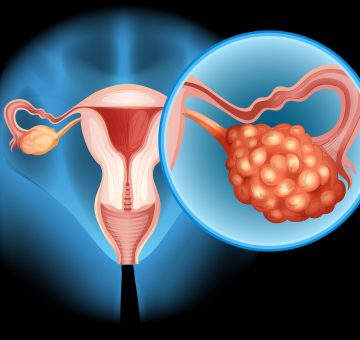
Understanding the Menstrual Cycle: A Comprehensive Guide
Greetings readers! This comprehensive guide on the menstrual cycle will help you understand its phases, hormonal changes occurring, menstrual problems and menopause care methods.
As a gifted health content writer, I will walk you through the complex details of this vital aspect of reproductive health. The menstrual cycle is a natural and crucial process in a woman’s life, and understanding it is fundamental to maintaining good gynaecological health.
In this blog article, let’s delve into its phases, the hormonal changes occurring, common menstrual problems, and how to manage them.
The Menstrual Cycle: An Overview

The menstrual cycle is a monthly series of changes occurring in a woman’s body, primarily aimed at preparing for pregnancy. Hormones play a complex role in controlling the cycle. In a healthy woman, the cycle typically lasts around 28 days but can vary from 21 to 35 days.
Let’s break down the menstrual cycle into its phases:
Menstruation (Day 1-5): The cycle begins with menstruation, often called the period. During this phase, the lining of the uterus (endometrium) sheds through the vagina as blood and tissue.
It starts the menstrual cycle and often comes with belly cramps and discomfort.
Follicular Phase (Day 1-13): Following menstruation, the body prepares for a potential pregnancy. The brain’s pituitary gland releases follicle-stimulating hormone (FSH), which prompts the ovaries to produce oestrogen. This hormone encourages the growth of follicles in the ovaries, each containing an immature egg.
Ovulation (Day 14): Approximately in the middle of the cycle, a surge in luteinising hormone (LH) triggers the release of a mature egg from one of the follicles. This process is known as ovulation and is the most fertile phase of the menstrual cycle.
Luteal Phase (Day 15-28): After ovulation, the empty follicle transforms into a structure called the corpus luteum. This structure produces progesterone, a hormone that prepares the uterine lining for a potential pregnancy. If fertilisation doesn’t occur, the corpus luteum breaks down, progesterone levels drop, and the cycle starts over with menstruation.
Hormonal Changes in the Menstrual Cycle
The menstrual cycle is a symphony of hormonal changes orchestrated by the brain, ovaries, and uterus. Understanding these changes is essential for appreciating the cycle’s complexity:
- Oestrogen: Produced mainly in the ovaries, oestrogen plays a central role in the menstrual cycle. Its levels rise during the follicular phase, promoting the growth of the uterine lining and preparing the body for ovulation.
- Progesterone: Produced by the corpus luteum after ovulation, progesterone maintains the uterine lining and prepares it for embryo implantation in case fertilisation occurs.
- Follicle-stimulating hormone (FSH) and Luteinizing Hormone (LH): These hormones, produced by the pituitary gland, regulate the development of follicles in the ovaries and trigger ovulation.
Common Menstrual Problems and Management
While many women experience a regular and pain-free cycle, others may encounter various menstrual problems. Take a glance at some common issues and ways to manage them:
- Dysmenorrhea (Painful Periods): Painful menstruation is often due to uterine muscle contractions and is known as dysmenorrhea. Over-the-counter pain relievers, heating pads, and lifestyle changes such as exercise and relaxation techniques can help manage this discomfort.
- Menorrhagia (Heavy Menstrual Bleeding): Excessive menstrual bleeding, known as menorrhagia, can be caused by hormonal imbalances, uterine fibroids, or other underlying conditions. Treatment options range from hormonal medications to surgical interventions.
- Amenorrhea (Absent Periods): When a woman misses her period for several months, it is called amenorrhea. Causes can include pregnancy, extreme weight loss, stress, or hormonal disorders. Treatment depends on the underlying cause.
- Premenstrual Syndrome (PMS): PMS encompasses a range of physical and emotional symptoms. It occurs in the days leading up to menstruation. Lifestyle modifications, dietary changes, and medications can help alleviate PMS symptoms.
Final Verdict
In conclusion, understanding the menstrual cycle is crucial for every woman’s reproductive health. The menstrual cycle consists of several phases, each characterised by specific hormonal changes and bodily adjustments. While a regular cycle is a sign of good health, various menstrual problems can arise. Seeking the guidance of private gynaecologists can provide personalised care and solutions for menstrual issues.
It’s essential to stay informed about your cycle, track any irregularities, and consult with healthcare professionals when necessary To maintain your gynaecological health. Remember that every woman’s experience is unique, and there is no one-size-fits-all solution for menstrual problems. You can ensure a healthy and comfortable menstrual cycle with proper knowledge and care.
You May Also Like
HYAcorp offers a quick and safe way to enhance your body without stitches, leaving behind scars, or downtime ...
If your cyst is small and not causing any problems or discomfort, your doctor may recommend a "watchful waiting" approac ...
Pelvic discomfort is an issue that can affect women of all ages. Understanding the root causes behind this discomfort is ...








